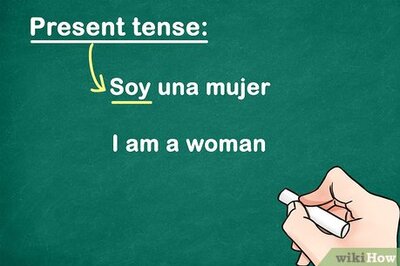
views
What is the "Penny Has 5 Children" riddle?
Penny has five children. The name of Penny’s first child is January. The second is called February. Penny’s third child answers to the name March. The fourth one’s name is April. What is the name of Penny’s fifth child.
Penny Has 5 Children Riddle Answer & Explanation
The answer to the riddle and name of Penny's 5th child is “What.” When you first read or hear the riddle, you may think the answer is obvious…but that’s why it’s so tricky. The riddle is designed to make you believe the last sentence is a question. However, it uses a period at the end instead of using a question mark, so it’s making a statement instead of asking a question. Because the final sentence is a statement, “What” functions as a proper noun instead of an interrogative, which is a word that begins a question,
The riddle misleads the reader into seeing a false pattern. The human brain has evolved to be very good at pattern recognition. However, that makes us more susceptible to seeing patterns where none exist because we base our perception on what we’ve seen or experienced before. In this case, the names January, February, March, and April cause us to assume the last name is May because we already know the pattern of months. This tendency to see false patterns is called apophenia, a type of cognitive bias. Other examples of apophenia are seeing objects formed by clouds, always seeing the same time on a clock, or seeing the “man in the moon” face.
Variations of the Penny Has 5 Children Riddle
One variation changes the final statement to a question. "Penny has five children. The name of Penny’s first child is January. The second is called February. Penny’s third child answers to the name March. The fourth one’s name is April. What is the name of Penny’s fifth child?" The answer is “yes” because the question still uses “What” as a proper noun instead of as an interrogative, even though the sentence is a question. The child's name is still "What" so the answer is “yes” or "true."
Another variation asks the name of the mother of a group of kittens. "A cat had 3 kittens: January, March and May. What was the mother’s name." The answer is "What," because this is the same trick as the original riddle, with the last sentence being a statement instead of a question.
One riddle makes Penny the child, not the mother. "Penny’s mom has 5 kids. The first one is named January, the second one February, the third one March, the fourth one April. What is the fifth one’s name?" The answer is Penny, because Penny isn’t the mother this time. She’s one of the children. All of the others are named, so her name has to be the answer.
Other variations use a different pattern to trick the reader. "John’s dad has three sons. The first 2 are named Snap and Crackle. What is the third one’s name?" The answer is John, because his father has 3 sons, and the other 2 are already named in the riddle. Here's another variation: "Sarah’s mom has 4 kids: North, South, East, and __?" The answer is Sarah, because her mother has 4 kids, and the other 3 are named already.
Riddle Solving Strategies
Read the riddle carefully and break down the information. A riddle is a short poetic form of writing, so use the same strategy as analyzing poetry to figure it out. Read through the riddle carefully, and then read it again. Instead of rushing to come up with an answer, think about what information it’s giving. Separate each piece of information, then consider its meaning and what that means when combined with the rest of the riddle. Once you have a better understanding of the pieces, it’ll be a lot easier to eliminate wrong answers. Example Riddle: I am not alive, but I can grow. I don't have lungs, but I need air. What am I? This riddle seems impossible at first because the statements appear to contradict each other. But what they’re really doing is eliminating large groups of answers. The answer can’t be an animal because they have lungs. It can’t be an insect or a plant because they are alive. Think of a type of thing that grows and needs air but isn’t alive. Answer: Fire
Focus on words with double meanings or synonyms. As you read through the riddle, look for words that have more than one meaning. Many riddles try to misdirect you by using one meaning of a word for the answer while implying it’s asking about a different meaning. Try picking out a riddle’s important words, then think about any alternate meanings they have. Example Riddle: What has many keys but can't open any doors? In this riddle, the keys may not mean the kind that fits into a lock. A key may also be something you press with your fingers. Answer: A piano or computer keyboard
Study all the details in the riddle before jumping to conclusions. Riddles are tricky by design. If you think you know the answer immediately, take a moment to think it over before answering. That way you have time to consider all the possibilities. Example Riddle: Some months have 31 days, others have 30. How many have 28 days? This is a trick question designed to get you to jump to the conclusion that it’s asking you how many months have only 28 days. But that isn’t the actual question. Ask yourself what the question is really asking. Answer: All of the months have at least 28 days.
Look for a literal answer. Riddles use confusing words, questions, and punctuation to trick you, but they often have answers that are so straightforward you overlook them. In most cases, you don’t need specialized knowledge to solve riddles. Try to think of the most obvious, literal answer. Example Riddle: What word becomes shorter when you add two letters? This riddle isn’t asking you to have an immense vocabulary filled with obscure words that somehow get shorter as you add more letters. It might have more to do with the word “shorter.” Answer: The word "short" becomes "shorter."




















Comments
0 comment